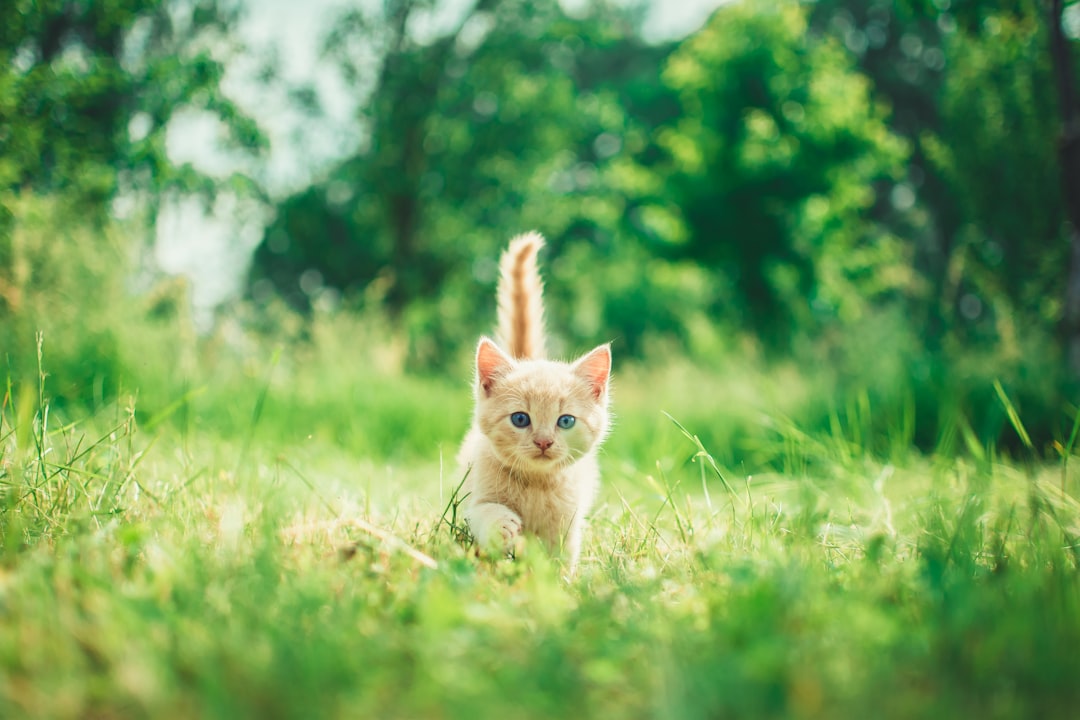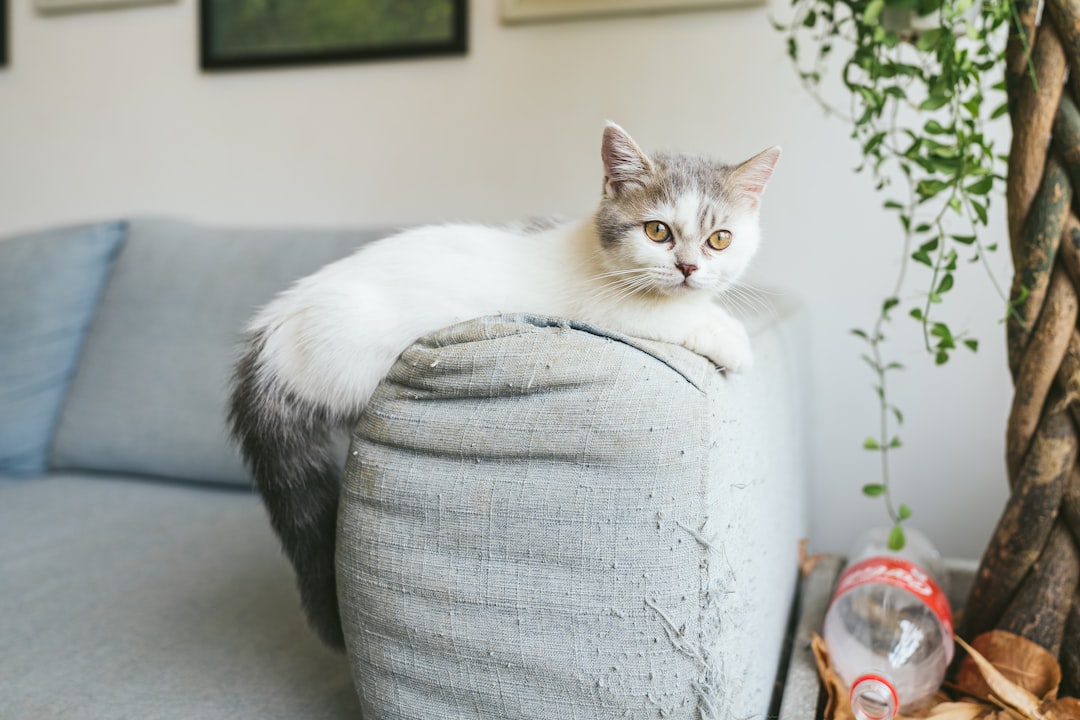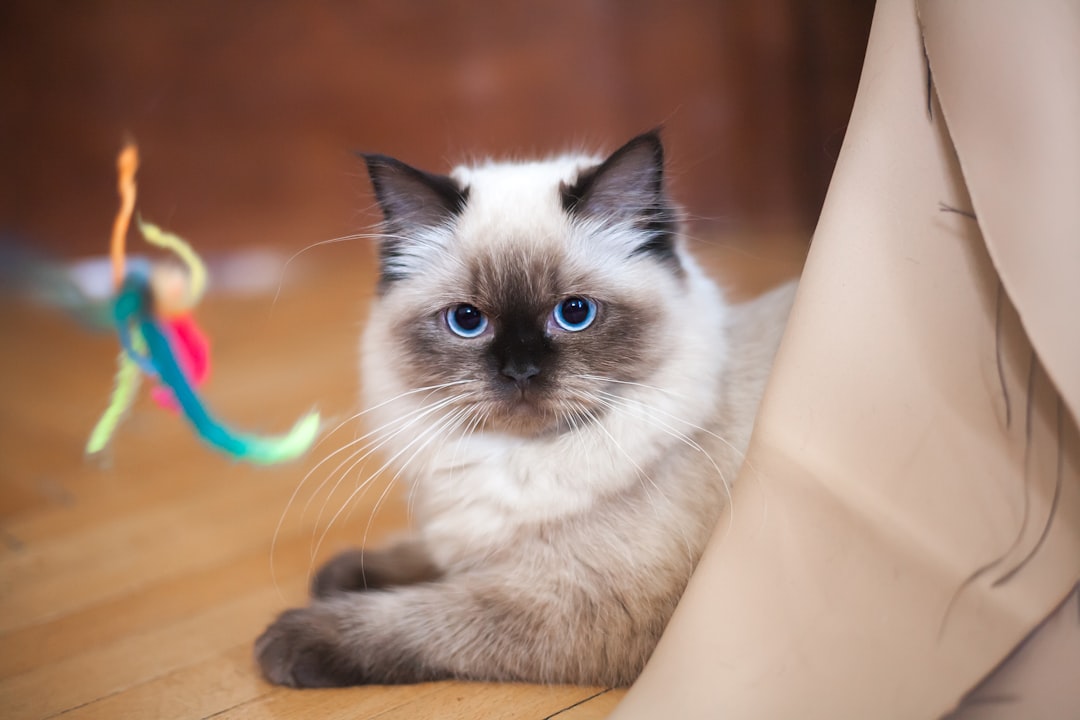In the world of pet care, the health and well-being of our feline companions often prompt us to seek quick solutions, particularly when we suspect an infection. However, using cat antibiotics without vet prescription can lead to serious health risks and complications. Understanding the complexities of cat antibiotics is essential, as is recognizing the importance of veterinary guidance. Fortunately, there are various effective herbal and natural alternatives, along with home remedies that can help address common ailments. This post delves into safe and holistic approaches to feline health, from probiotics to nutritional support, while emphasizing the critical need for building a strong relationship with your veterinarian. By exploring these options, you can ensure your cat receives the care it deserves, without compromising its health or safety.
Understanding Cat Antibiotics
What Are Cat Antibiotics?
Cat antibiotics are medications specifically designed to combat bacterial infections in felines. These drugs work by either killing bacteria or inhibiting their growth, thereby assisting in the recovery process. It’s crucial for pet owners to recognize that antibiotics are not effective against viral infections or other non-bacterial ailments.
Types of Antibiotics Commonly Used for Cats
Several types of antibiotics may be prescribed to cats, each with its unique applications. Here’s a concise table summarizing the most common antibiotics:
| Antibiotic Name | Usage | Form |
|---|---|---|
| Amoxicillin | Skin and urinary infections | Oral or injectable |
| Clindamycin | Dental infections | Oral |
| Cephalexin | Skin infections | Oral |
| Doxycycline | Respiratory infections | Oral |
| Metronidazole | Digestive tract infections | Oral |
How Antibiotics Work in Feline Patients
Antibiotics function by targeting specific components or processes within bacterial cells. For example:
- Cell wall synthesis: Some antibiotics prevent the formation of the bacterial cell wall, leading to cell rupture.
- Protein synthesis inhibition: Others interfere with the bacteria’s ability to produce essential proteins, hampering their growth and replication.
- DNA replication disruption: Certain antibiotics affect the bacterial DNA, preventing reproduction.
This selective targeting helps maintain the balance of healthy bacteria while effectively combating harmful pathogens. It’s important to remember that the use of cat antibiotics without vet prescription should be approached with caution, as improper use may lead to ineffective treatment or antibiotic resistance.
The Importance of Veterinary Guidance
Why a Vet Prescription is Essential
Obtaining a vet prescription for antibiotics is crucial for your cat’s health and safety. Veterinarians possess specialized knowledge that allows them to diagnose, prescribe, and monitor treatment effectively. They assess not only the specific infection but also your cat’s medical history, which can significantly impact treatment efficacy. Furthermore, cat antibiotics without vet prescription may lead to inadequate dosages or inappropriate medications, potentially exacerbating health issues rather than resolving them.
Potential Risks of Self-Medicating Cats
Self-medicating your cat poses significant dangers that can compromise their well-being. Here are some key risks:
| Risk | Description |
|---|---|
| Inaccurate Dosage | Without proper guidelines, it’s easy to administer too much or too little medication. |
| Drug Interactions | Cats may be on other medications that could react negatively with antibiotics. |
| Misdiagnosis | Infections can present similarly; a vet’s assessment ensures proper diagnosis. |
| Side Effects | Some antibiotics can have side effects that may go unnoticed without veterinary supervision. |
Understanding Your Cat’s Health Needs
Every cat is unique, and their health needs vary significantly based on factors like age, breed, and pre-existing conditions. A veterinarian employs diagnostic tools such as blood tests, urinalysis, and imaging to unveil the underlying issues that may require antibiotic intervention. Understanding your cat’s specific health requirements is pivotal in ensuring they receive the correct treatment. This tailored approach not only aids in rapid recovery but also minimizes the chances of recurrence. By prioritizing veterinary guidance, pet owners can make informed decisions that support their cat’s health and longevity.
Herbal and Natural Alternatives
Overview of Herbal Remedies for Cats
When it comes to caring for our feline companions, many pet owners seek cat antibiotics without vet prescription alternatives. Herbal and natural remedies can provide supportive care for various conditions in cats, ranging from minor infections to digestive issues. Here’s a brief overview of popular herbal remedies:
| Herb | Uses | Forms Available |
|---|---|---|
| Chamomile | Anti-inflammatory, calming | Tea, extracts, capsules |
| Echinacea | Immune system booster | Tinctures, capsules |
| Calendula | Wound healing | Salves, oils, tinctures |
| Ginger | Digestive aid | Tea, powder, capsules |
Benefits and Risks of Natural Alternatives
Utilizing herbal remedies can yield several advantages for your cat’s health:
- Gentler on the System: Many natural remedies are less harsh compared to conventional drugs.
- Reduced Side Effects: Natural alternatives often equate to fewer adverse reactions.
- Holistic Healing: Some herbs may support overall wellness and immunity.
However, risks exist as well:
- Interactions: Herbs can interact with medications, so always stay informed.
- Efficacy: Not all natural remedies have undergone rigorous scientific testing, risking effectiveness.
- Lack of Regulation: Herbal products can vary in quality and concentration.
Consulting with a Holistic Vet
Before introducing any herbal treatments, it’s crucial to consult with a holistic veterinarian. They can provide guidance tailored to your cat’s specific health needs. A holistic vet will:
- Evaluate Overall Health: Recognizing pre-existing conditions helps identify suitable remedies.
- Suggest Proper Dosing: Dosage varies based on weight and health status, avoiding potential toxicity.
- Monitor Progress: Regular check-ins ensure that the treatment is effective and safe.
Using herbal and natural alternatives can be a valid approach to your cat’s health care, yet always ensure these methods align with professional veterinary advice.
Home Remedies for Common Cat Ailments
When it comes to caring for your feline friend, many pet owners often seek cat antibiotics without vet prescription for minor health issues. However, exploring home remedies can also be a safe and effective approach for minor ailments. Here, we delve into the possibilities and precautions of using these remedies.
Effective Home Treatments for Minor Infections
Several home treatments can enhance your cat’s health. It’s crucial to remember that these are best suited for minor conditions. Here are a few:
| Ailment | Home Remedy | Application |
|---|---|---|
| Minor Cuts/Scrapes | Witch hazel | Gently apply to the affected area |
| Ear Infections | Apple cider vinegar diluted with water | Apply with a cotton ball, avoid deep cleaning |
| Digestive Upset | Plain boiled chicken or pumpkin | Offer small portions for easier digestion |
| Respiratory Issues | Humidified air or steam | Use a bathroom with hot shower for steam |
When to Use Home Remedies Safely
While home remedies can prove useful, they are not substitutes for professional care in every situation. It’s essential to evaluate your cat’s overall health and the severity of the symptom before proceeding. Cat antibiotics without vet prescription should only be considered when you’re confident in the non-serious nature of the ailment. Always consult available resources or a vet if unsure.
Signs Your Cat Needs Professional Help
While some ailments can be treated at home, it’s crucial to know when to seek veterinary assistance. Watch for these critical signs:
- Persistent vomiting: If your cat vomits more than two times or has blood in its vomit.
- Lethargy: A significant decrease in energy and activity levels.
- Loss of Appetite: Refusing to eat for more than 24 hours can signal serious health issues.
- Severe Pain: If your cat is hiding, meowing excessively, or showing other signs of distress.
Recognizing these signs will help you decide whether to turn to home remedies or consult a veterinary professional for interventions. Careful monitoring and timely action are vital for your cat’s well-being.
Probiotics and Their Role in Cat Health
Understanding Probiotics for Cats
Probiotics are live microorganisms that confer health benefits when administered in adequate amounts. In cats, these beneficial bacteria play a crucial role in maintaining gut health and overall well-being. Understanding how probiotics work can empower cat owners to enhance their feline friends’ wellness, particularly during and after antibiotic treatments.
| Key Points | Details |
|---|---|
| Definition | Live beneficial bacteria |
| Primary Function | Support digestive health |
| Common Sources | Yogurt, supplements, fermented foods |
Benefits of Probiotics During Antibiotic Treatment
Antibiotics can disrupt a cat’s natural gut flora, leading to digestive disturbances. Probiotics can help restore this balance, making them an essential addition during antibiotic therapy. Here are some benefits:
- Gut Flora Restoration: They replenish helpful bacteria lost during antibiotic treatment.
- Enhanced Immunity: Probiotics boost the immune system, aiding in faster recovery from infections.
- Prevention of Diarrhea: They can help minimize antibiotic-associated diarrhea, a common side effect.
Choosing the Right Probiotic for Cats
When selecting a probiotic for your cat, consider the following factors to ensure effectiveness:
- Strain Specificity: Look for products with strains that have been researched specifically for feline health.
- CFU Count: Choose products with a high colony-forming unit (CFU) count for maximum efficacy.
- Formulation: Probiotics come in various forms, including powders and soft chews, catering to different preferences.
Incorporating cat antibiotics without vet prescription carries risks, thus pairing probiotics provides a safer, more natural approach to recovery. By understanding the role of probiotics, you can support your cat’s health effectively during and after antibiotic treatments.
Recognizing Symptoms That May Require Antibiotics
Common Signs of Infection in Cats
Recognizing when your cat may need antibiotics is crucial for their health and well-being. Some common signs of infection include:
| Symptom | Description |
|---|---|
| Persistent Lethargy | Unusual tiredness or disinterest in activities. |
| Fever | Elevated body temperature (over 102.5°F). |
| Vomiting/Diarrhea | Frequent episodes, especially with blood present. |
| Changes in Appetite | Refusal to eat or significant weight loss. |
| Coughing or Sneezing | Continuous, could indicate respiratory infection. |
| Discharge | Unusual discharge from eyes or nose. |
When to Seek Immediate Veterinary Attention
Recognizing the severity of your cat’s symptoms is essential. If your cat exhibits any of the following signs, cat antibiotics without vet prescription are not the solution, and you should seek immediate veterinary attention:
- Difficulty Breathing: Signs include rapid or labored breathing.
- Severe Pain: Obvious discomfort or sensitivity when touched.
- Lethargy: Extreme lethargy accompanied by other symptoms.
- Severe Vomiting or Diarrhea: Multiple episodes in a short time frame.
Understanding Your Cat’s Behavior
Your cat’s behavior can provide indispensable clues about their health. Changes such as excessive hiding, aggression, or vocalization may suggest discomfort or anxiety related to illness. Regularly observing your cat’s normal behaviors can help you identify when something is off.
In summary, familiarizing yourself with these signs and behaviors can help you determine if your furry friend requires antibiotics and when to seek professional veterinary advice. Always prioritize their health and consult a vet when in doubt.
Legal Considerations for Pet Owners
Laws Surrounding Animal Health and Prescription Medications
When it comes to administering medications such as antibiotics, pet owners must be aware of existing laws. Most jurisdictions require a veterinarian’s prescription for antibiotics to ensure safe and appropriate use. Cat antibiotics without vet prescription may pose legal repercussions, including fines or charges of animal endangerment. Understanding these laws is crucial for responsible pet ownership.
Importance of Following Veterinary Guidelines
Adhering to veterinary guidance cannot be overstated. Licensed veterinarians evaluate the specific needs of your cat, ensuring the right dosage and type of antibiotic are prescribed. Following these guidelines helps avoid medication misuse and protects your cat from adverse reactions or resistance development. A well-informed owner will prioritize health by seeking professional advice rather than resorting to off-label or unsupervised treatments.
Consequences of Illegal Use of Antibiotics
The illegal use of antibiotics is not just a legal issue—it can also have serious health ramifications for your cat. Misuse can lead to antibiotic resistance, prolonging infections and complicating treatment options. Moreover, improperly treated conditions can evolve into more severe health issues, requiring more intensive medical care. Here’s a table summarizing potential consequences:
| Consequence | Description |
|---|---|
| Legal Penalties | Fines or legal action for administering prescription drugs without a vet’s guidance. |
| Health Risks | Increased potential for antibiotic resistance in your cat. |
| Financial Impact | Higher costs for treating advanced medical conditions resulting from untreated ailments. |
| Emotional Stress | Concern and guilt over the health and well-being of your pet due to improper care. |
In summary, understanding the legal framework and prioritizing veterinary advice is essential in protecting both your feline friend and your responsibilities as a pet owner.
Integrative Approaches to Feline Health
Combining Conventional and Alternative Treatments
Integrative approaches to feline health emphasize the importance of blending conventional veterinary medicine with alternative treatments to achieve optimal health outcomes for your cat. By utilizing a variety of methods, pet owners can create a more comprehensive care strategy that includes both cat antibiotics without vet prescription options and well-researched complementary therapies such as acupuncture, herbal medicine, and homeopathy. This holistic viewpoint encourages collaboration between veterinarians and pet owners, enhancing both understanding and outcomes.
Preventative Care and Its Role in Cat Health
Preventative care is essential in maintaining your cat’s wellbeing. Regular veterinary check-ups, vaccinations, and parasite control play pivotal roles in preventing illnesses. Additionally, integrating nutritional support and environmental enrichment can bolster your cat’s immune system, reducing the risk of infections and diseases. Here’s a quick reference table on preventative measures:
| Preventative Measures | Benefits |
|---|---|
| Regular Vet Visits | Early disease detection |
| Vaccinations | Protection against common diseases |
| Balanced Diet | Supports overall health |
| Enrichment Activities | Reduces stress and anxiety |
Building a Holistic Health Plan for Your Cat
Creating a holistic health plan for your feline friend involves considering their physical, emotional, and dietary needs. This plan includes establishing a balanced diet, promoting exercise, and ensuring regular social interaction. Utilizing supplements like omega-3 fatty acids for skin health or probiotics to enhance gut flora can significantly contribute to your cat’s wellbeing. It’s crucial to involve a veterinarian in this process, particularly when contemplating any cat antibiotics without vet prescription alternatives, to ensure a safe and effective health strategy tailored to your cat’s needs.
Nutritional Support for Recovery
Importance of Nutrition in Healing
Nutrition plays a vital role in the recovery of cats, especially when they are unwell or undergoing treatment. A well-balanced diet strengthens the immune system, aids in tissue repair, and enhances overall vitality. Proper nutrition ensures that your cat receives essential nutrients, including proteins, vitamins, and minerals, which are crucial during healing processes. Neglecting nutritional needs can prolong illness and hinder recovery times.
Diet Recommendations During Antibiotic Treatment
When managing your cat’s health with cat antibiotics without vet prescription, it’s essential to provide a diet that complements their treatment. Here are some key recommendations:
| Nutrient | Recommendation | Purpose |
|---|---|---|
| Proteins | High-quality, easily digestible proteins | Supports healing and muscle repair |
| Omega-3 Fatty Acids | Incorporate fish oil or flaxseed oil | Reduces inflammation and boosts immunity |
| Vitamins | Ensure adequate Vitamin C and E intake | Aids in recovery and fights off infections |
| Fiber | Include pumpkin or psyllium in meals | Promotes healthy digestion |
Hydration Strategies for Sick Cats
Hydration is equally important in a cat’s recovery journey. Dehydration can exacerbate health issues and hinder the effectiveness of antibiotics. Here are effective strategies to ensure your cat stays hydrated:
- Fresh Water: Always provide fresh and clean water to encourage drinking.
- Wet Food: Incorporate wet food into their diet as it has higher moisture content, aiding in hydration.
- Broth: Consider giving plain, low-sodium chicken or beef broth, which not only hydrates but also entices your cat to eat.
- Water Fountain: Many cats prefer running water; a pet water fountain can stimulate interest in drinking.
By focusing on proper nutrition and hydration, you give your furry friend the best chance at a speedy recovery and overall health.
Building a Relationship with Your Veterinarian
Effective Communication with Your Vet
Building a strong relationship with your veterinarian is crucial for your cat’s health. Open and honest communication fosters trust, enabling your vet to better understand your concerns and your cat’s needs. Consider the following tips for effective communication:
| Tip | Explanation |
|---|---|
| Be Prepared | Bring relevant documents like vaccination records and any notes about changes in behavior. |
| Ask Questions | Don’t hesitate to ask about diagnoses, treatment options, and the side effects of medications, including cat antibiotics without vet prescription alternatives. |
| Share Observations | Describing any unusual behavior or symptoms helps your veterinarian provide precise diagnoses. |
Regular Health Check-Ups and Their Importance
Consistent veterinary visits play a vital role in preventive care and early detection of health issues. Regular health check-ups can:
- Catch Issues Early: Routine examinations can help identify problems before they become severe.
- Boost Health: Vaccinations and preventive treatments administered during check-ups can promote overall health.
- Tailored Advice: Each visit allows your vet to provide personalized advice on nutrition, behavior, and lifestyle, ensuring your cat’s well-being.
When to Get a Second Opinion
While your primary veterinarian is a critical resource, seeking a second opinion when you feel uncertain can be beneficial. Here are scenarios where this may be appropriate:
| Situation | Reason for Second Opinion |
|---|---|
| Unexplained Symptoms | If symptoms persist without explanation, a fresh perspective can uncover underlying issues. |
| Complex Conditions | New perspectives on treatment plans may provide you with additional options that are more effective. |
| Concerns About Diagnosis | When unsure about a diagnosis, a second evaluation can confirm or clarify your vet’s opinion. |
In summary, a collaborative relationship with your veterinarian is essential for your cat’s health journey. Engaging actively in discussions, ensuring regular visits, and being open to multiple opinions will empower you as a pet owner, ultimately benefiting your feline companion.
Frequently Asked Questions
What are the risks of using cat antibiotics without a vet prescription?
Using cat antibiotics without a vet prescription poses several risks, including the potential for incorrect dosage and inappropriate medication choice, which can lead to ineffective treatment or complications. Cats may also experience adverse reactions to antibiotics if the chosen medication is not suitable for their specific condition. Additionally, using antibiotics without veterinary guidance can contribute to antibiotic resistance, making future infections harder to treat. It’s crucial to consult a veterinarian to ensure that any treatment plan is safe and effective.
Are there any over-the-counter alternatives for cat antibiotics?
While there are no direct over-the-counter alternatives that substitute the need for cat antibiotics prescribed by a veterinarian, some pet owners look for homeopathic remedies or herbal treatments that may provide symptomatic relief. These alternatives can support overall health but do not replace antibiotics where they are truly required, such as in bacterial infections. Always consult with a knowledgeable veterinarian before trying over-the-counter alternatives to ensure they are appropriate for your cat’s specific health needs and will not interfere with any necessary treatments.
How can I tell if my cat needs antibiotics?
Determining whether your cat needs antibiotics is best done through a veterinarian’s assessment. Signs indicating a possible need for antibiotics may include persistent fever, unusual lethargy, wounds or abscesses that are not healing, or any unusual discharge that suggests an infection. Only a veterinarian can provide a proper diagnosis and determine if antibiotics are necessary based on the underlying cause of these symptoms. Self-diagnosing or guessing can lead to inadequate treatment and may exacerbate your cat’s health issues.
What should I do if my cat is allergic to prescribed antibiotics?
If you suspect that your cat is having an allergic reaction to a prescribed antibiotic, you should contact your veterinarian immediately. Common signs of an allergic reaction may include itching, swelling, vomiting, or diarrhea. Your vet may provide an alternative antibiotic that is less likely to cause a reaction or suggest other treatment options to ensure your cat’s safety and well-being. It is crucial to never stop administering a prescribed medication without veterinary guidance, as this may compromise your cat’s health.
What alternative treatments are available for infections in cats?
Alternative treatments for infections in cats can include supportive therapies such as probiotics, which may help restore healthy gut flora after antibiotic use, or immune-boosting supplements that can assist with recovery. In some cases, holistic approaches like acupuncture or herbal remedies could also be considered; however, these should only be administered under the advice and supervision of a qualified veterinarian. It’s essential to address the root cause of the infection rather than solely pursuing alternative treatments.



